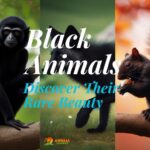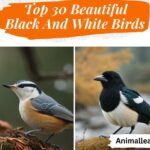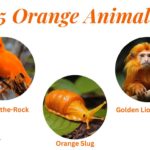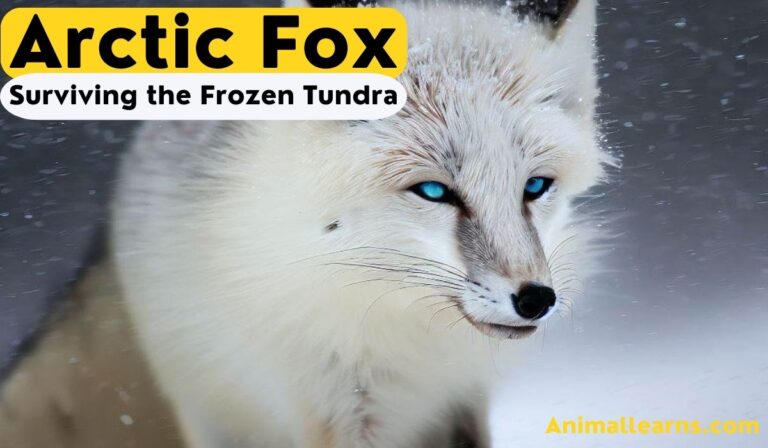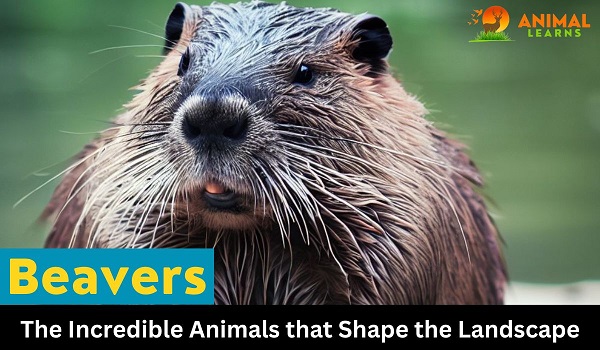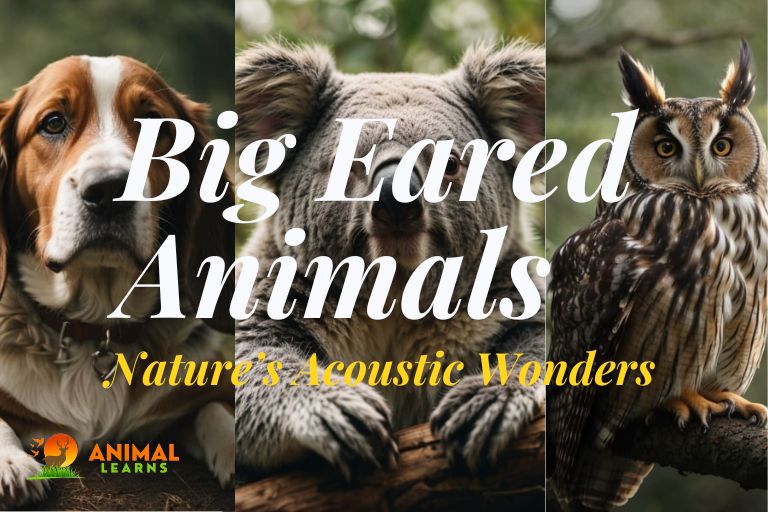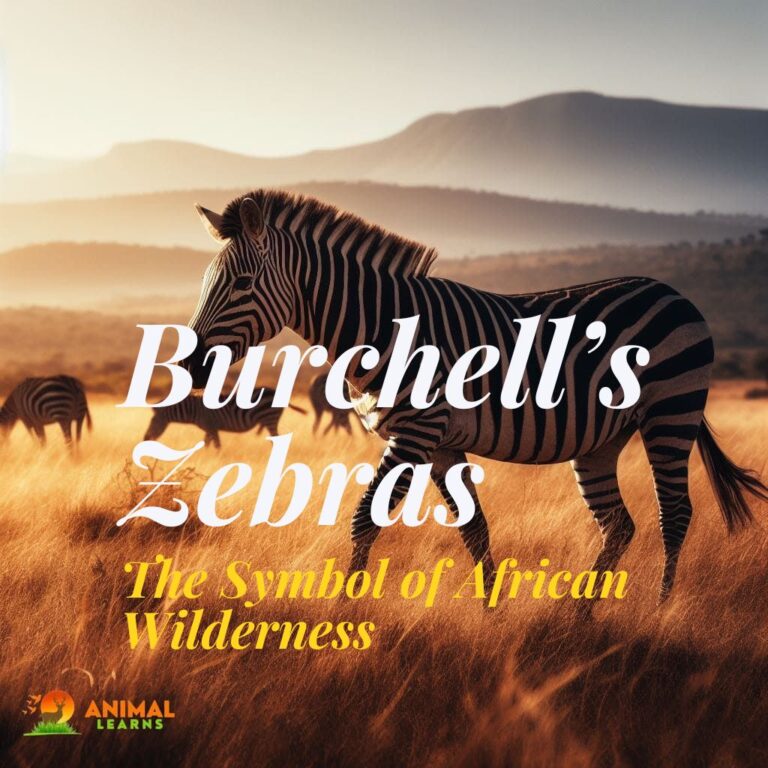Agouti: Diet, Habitat and Interesting Facts
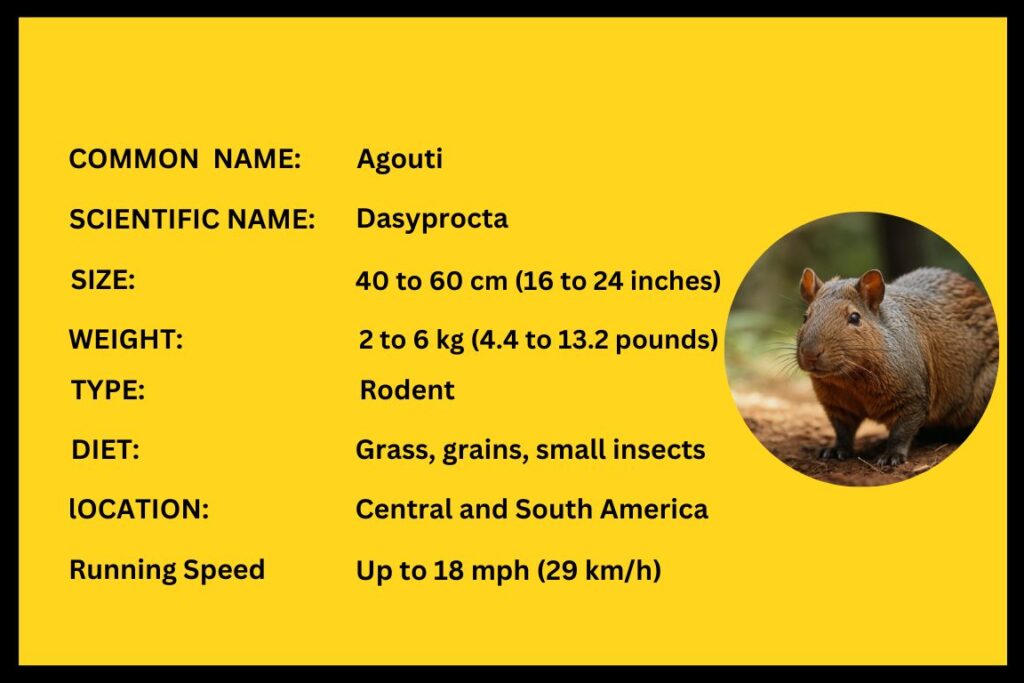
The agoutis are medium-sized rodents with coarse, brown, reddish, or dull orange fur on top, which is whitish or buff on the underside. As a rodent native to tropical rainforests in Central and South America, the Agouti is captivating.
In addition to its elongated body, large head, and long rump, the agouti has slender legs with three hoof-like toes on its hind feet, resulting in a distinctive appearance.
This is a small mammal, that shares the realm of mammals with larger and more formidable counterparts like the tiger and cheetah.
With their alternating black and buff bands on individual hairs, their fur displays a striking dasyprocta pattern, ranging from pale orange to deep brown or blackish.
Its dozen species of rodents vary in size and color, reaching up to 2.5 feet in length and weighing as much as 13 pounds. Although primarily found in tropical Americas, some species have been introduced to the Caribbean.
Explore the diverse world through their charming demeanor and unique adaptations.
The Appearance
Contents
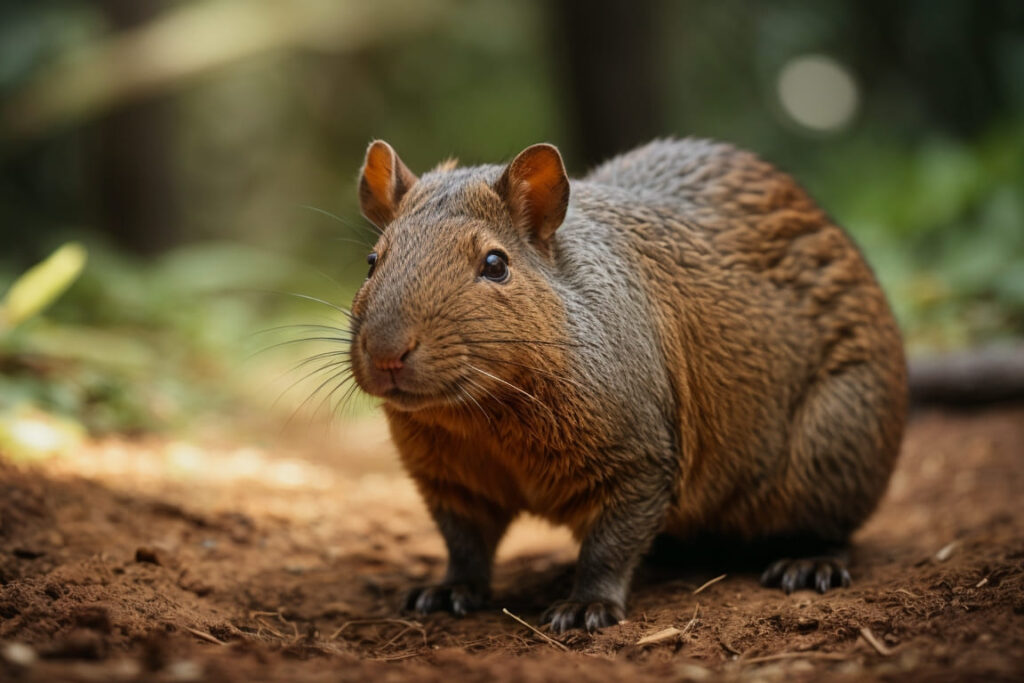
Generally, Dasyprocta measures between 20 and 25 inches in length, with a tail that adds 7 to 12 inches to its length, characterized by a robust and compact body covered in coarse fur.
Their fur varies in coloring, ranging from dasyprocta with reddish-brown coats to those with grizzled coats. Foraging is easier for them because of their sturdy legs and sharp claws.
Diet
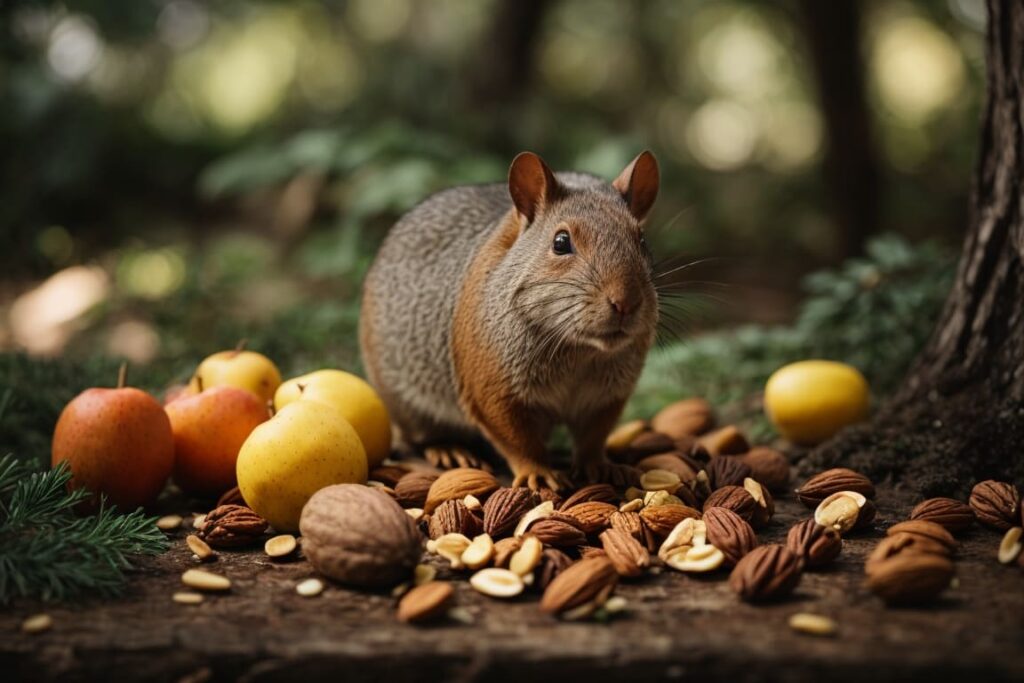
These mammals are predominantly herbivorous, eating fruits, nuts, seeds, and vegetation. Their strong jaws and sharp incisors make it possible for them to open hard-shelled nuts easily, contributing to their role as seed dispersers.
Life Cycle
After a brief but crucial gestation period of around 104 days, the dasyprocta give birth to relatively developed offspring capable of walking independently and opening their eyes.
In order to survive in the wild, dasyprocta pups wean quickly and reach sexual maturity at around 6 to 12 months. This rapid maturation is an adaptive trait.
Habitat
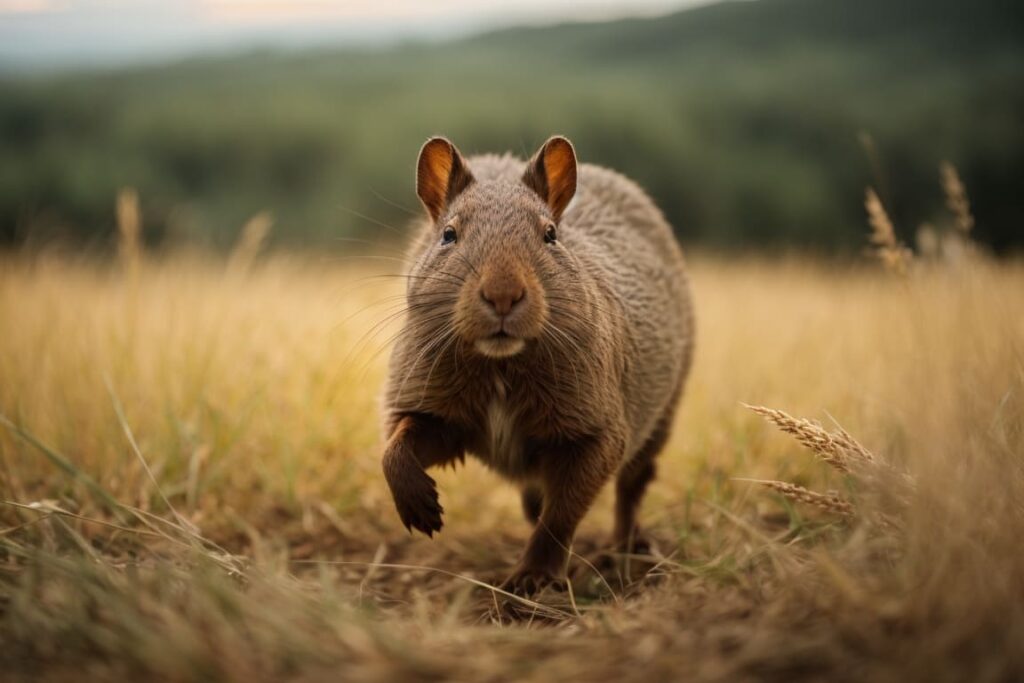
Its habitat adaptability across the Americas is impressive. Some excel in savannas, where they forage efficiently on open plains with scattered trees, utilizing dense vegetation for cover and a varied diet. Some thrive in lush rainforests, thriving amidst dense vegetation.
Foraged areas provide food and shelter to them, so grassy clearings within woods provide a suitable habitat, which also provides navigation and cover.
In order to survive, they exploit agricultural and suburban areas. Dasyprocta can adapt to different elevations in Central and South America, including Mexico, Colombia, Brazil, and Argentina, contributing to their wide distribution.
Behavior And Lifestyle
As part of their seed dispersal strategy, Dasyprocta buries excess seeds in the ground in order to contribute to plant regeneration. This behavior is known as seed caching.
There is a delicate balance between cooperation and competition in their communal living arrangements, where dominant individuals may monopolize resources.
Agouti Health and Lifespan
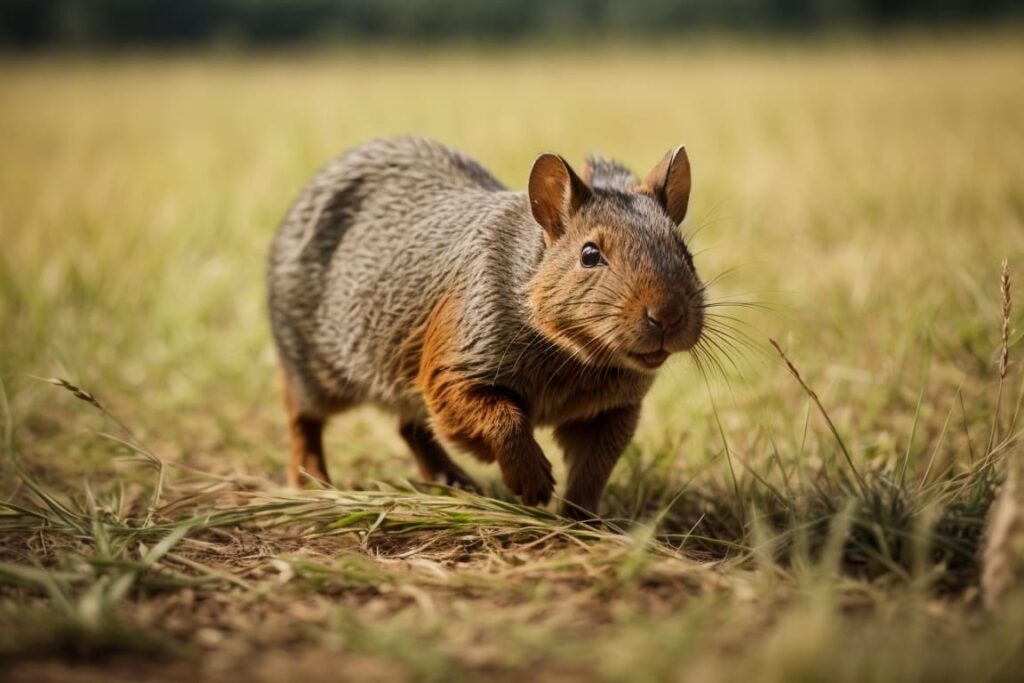
Understanding the health and lifespan of dasyprocta is essential for those considering them as pets. In captivity, dasyprocta can live up to 10 years when provided with proper care and a suitable environment.
However, their lifespan can be influenced by factors such as diet, genetics, and living conditions. Agoutis are generally robust animals, but they may be prone to specific diseases, particularly in captive settings. Common health concerns include dental issues and obesity, which can be managed through a balanced diet and regular veterinary check-ups.
It’s crucial for agouti owners to be aware of their pets’ behaviors, as changes may indicate underlying health issues. Responsible care, a nutritious diet, and attention to their natural behaviors contribute to the overall well-being and longevity of these fascinating creatures.
Reproduction
Women in dasyprocta exhibit induced ovulation, releasing eggs following copulation, which promotes synchronized breeding within social groups and fosters communal care of their offspring.
The dominant pair monopolizes breeding opportunities within these communities, while others participate in communal care, strengthening social bonds among the members.
Dasyprocta matures rapidly, with a short gestation period of 104 days, allowing them to contribute rapidly to reproduction, and maintaining population stability.
The pups mature rapidly and become independent, ensuring efficient resource utilization and improving survival prospects despite having relatively small litters of two to four pups.
By demonstrating the intricate interplay between community structures and rapid life cycle adaptations, Dasyprocta illustrates their adaptability to dynamic environments.
Subspecies of Agouti
Central American (Dasyprocta punctata):
- Habitat: From Mexico to Colombia, it thrives in Central American regions.
- Distinctive Features: In its diverse habitat, its coat coloration, which can include shades of brown and gray, provides effective camouflage.
Black-rumped (Dasyprocta prymnolopha):
- Habitat: The species inhabits mainly South American countries, including Venezuela and Brazil.
- Distinctive Features: It is distinguished from other dasyprocta subspecies by its black-rumped appearance.
Azara’s (Dasyprocta azarae):
- Habitat: Originally found in South America, especially in Paraguay and northern Argentina.
- Distinctive Features: Exhibits variation in coat coloration, often with a reddish or brownish hue, as well as a prominent head tuft.
Mexican (Dasyprocta mexicana):
- Habitat: The species is endemic to Mexico, inhabiting areas such as the Yucatán Peninsula.
- Distinctive Features: Its distinctive features include a compact body and short legs that make it suitable for its habitat.
Crested (Dasyprocta cristata):
- Habitat: Found in various South American countries, including Peru and Ecuador.
- Distinctive Features: Named for the prominent crest of fur along its back, a distinctive feature setting it apart from other species.
Interesting Facts
- Dasyprocta are expert seed dispersers, burying excess seeds in the ground and contributing significantly to the regeneration of plant life in their ecosystems.
- Females possess a unique reproductive mechanism, inducing ovulation through copulation. This trait allows for synchronized breeding within social groups, promoting communal care for the offspring.
- Living in communal groups, they exhibit complex social hierarchies. Dominant individuals may monopolize resources, highlighting a delicate balance between cooperation and competition within their communities.
- Dasyprocta pups are precocial, rapidly maturing within weeks and gaining independence. This swift development is an adaptive strategy for survival in the wild.
- Thriving in diverse habitats, from tropical rainforests to savannas, Dasyprocta showcases remarkable adaptability as keystone species, influencing the ecological balance of their environments.
- Various subspecies, such as the Central American Agouti and the Black-rumped Dasyprocta, display distinct physical features and coat coloration, contributing to the overall genetic diversity of the Dasyprocta.
- Despite being primarily diurnal, Dasyprocta may exhibit nocturnal behavior in areas with human disturbance, showcasing their ability to adapt to changing environmental conditions.
- They communicate using a range of vocalizations, including grunts and whistles. These vocal signals play a crucial role in social interactions and in conveying information about potential threats.
- With their influence on seed dispersal and vegetation, These are considered keystone species, playing a vital role in maintaining the ecological balance of their habitats.
- Some subspecies, like the Mexican Dasyprocta, are characterized by a compact body and short legs, showcasing physical adaptations tailored to specific environmental conditions.
Population

Predation: Natural predators feed on dasyprocta. Large birds of prey, cats, and snakes prey on dasyprocta, exerting selective pressure on their numbers and distribution.
Habitat Alteration: Changing habitats can result in a reduction in the number of suitable environments for dasyprocta due to human activities such as deforestation, urbanization, and agriculture.
Hunting: A reduction in population can occur as a result of unregulated hunting, especially in areas where bushmeat is in high demand. Hunting: they are hunted for their meat and fur in some regions. To ensure the sustainability of dasyprocta populations, conservation efforts often include regulating and managing hunting practices.
Role as Seed Dispersers: A key role of Agoutis is as a seed disperser. This role is intricately linked with their population dynamics. The seeds they cache in the ground promote plant regeneration, thereby influencing the distribution and abundance of vegetation in their habitats as a result.
FAQs
What is the main diet of dasyprocta?
They primarily consume fruits, seeds, and vegetation as their main diet.
Are they social animals?
Yes, they often live in communal groups, exhibiting complex social hierarchies.
How fast can they run?
Agoutis can reach speeds of up to 18 mph (29 km/h) for efficient foraging and evading predators.
Where are they commonly found?
Dasyprocta inhabit a variety of ecosystems across Central and South America, from tropical rainforests to savannas.
What is unique about dasyprocta reproduction?
Females can induce ovulation through copulation, promoting synchronized breeding within social groups for the communal care of offspring.


